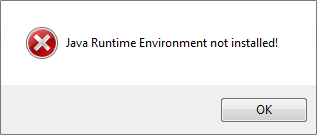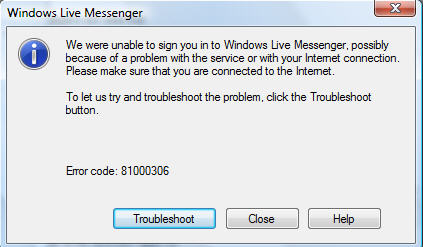Steps To Resolve Windows Error 3
Windows Error 3 is caused primarily by your PC being unable to correctly load or read a particular file or setting inside the “Java Virtual Machine” settings of your computer. This type of error normally appears when you are installing a new application. To resolve the problems that your computer is experiencing, you need to fix any of the problems that might enable the error to show. This tutorial will demonstrate for you how to easily repair the errors.
What Causes Windows 3 Errors On Windows?
The Windows error 3 normally appears on your screen in this format:
- “Windows error 3 occurred while loading the Java VM.”
The error 3 notification that shows on your PC is an indication that there is a problem with your Java Runtime configurations. Java Virtual Machine is hugely complex and uses hundreds of files and settings that are vital for your system to run properly. The problems arise when those settings are not used correctly. You need to be able to repair any of the problems that your operating system may have – which can be performed using the steps outlined below:
How To Fix Windows Errors 3
Step 1 – Change The “Java Environmental Variable”
The first thing that you need to do to fix the problem is change the Java Environmental Variable settings in your Windows. To be able to that, follow these steps exactly:
- Verify that you have the Java bin folder added to your System Path by clicking
Start> Control Panel> System> System Properties> Advanced> Environment variables. The variations of the path may be:
- C:\Program Files\Java\JRE 1.6.0\bin
- C:\Program Files\Java\JDK 1.6.0\jre\bin
- If the “bin” folder is not included in your System Path, you need to add it.
- Change the settings of your Java_Home System variable by adding quotation marks to the path. For example:
- “C:\Program Files (x86)\Java\xxxxxxxx“
If this process did not solve the problem, you can try solving it by proceeding to the next step.
Step 2 – Try Installing Java To A Different Directory
If your installation of the Java Virtual Machine encountered problems, you need to install it inside a different directory. The current folder may be full or somehow damaged. You need to first uninstall it by clicking Start> Control Panel> Add/Remove Programs or Programs and Features (Vista and Windows 7) and select the Java Runtime program from among the list, and then click “Remove” or “Uninstall” (Vista and Windows 7) to remove the program. Restart your computer and then log back in to Windows. Re-install Java to a different location by running the installation file from your hard drive, or you can obtain a new installer by downloading one from the Internet. If you are unsure where to place the new files, you can use the directory “C:\Java\xxxxx” as the new location to install it to.
Step 3 – Clean Out The Registry
If re-installing Java into another location did not work, you need to repair errors inside your registry. The registry is a large central database that Windows use to store the important settings for all the files and programs on your computer. Windows needs to read these settings to be able to load and execute your programs and files properly. Despite this significant role that it plays, the registry nevertheless suffers from many recurring errors, due to the way Windows saves hundreds of registry keys at the same time, which sometimes causes them to be corrupted or damaged. You need to repair the registry entries by using a registry cleaner to effectively clean errors inside your registry.



